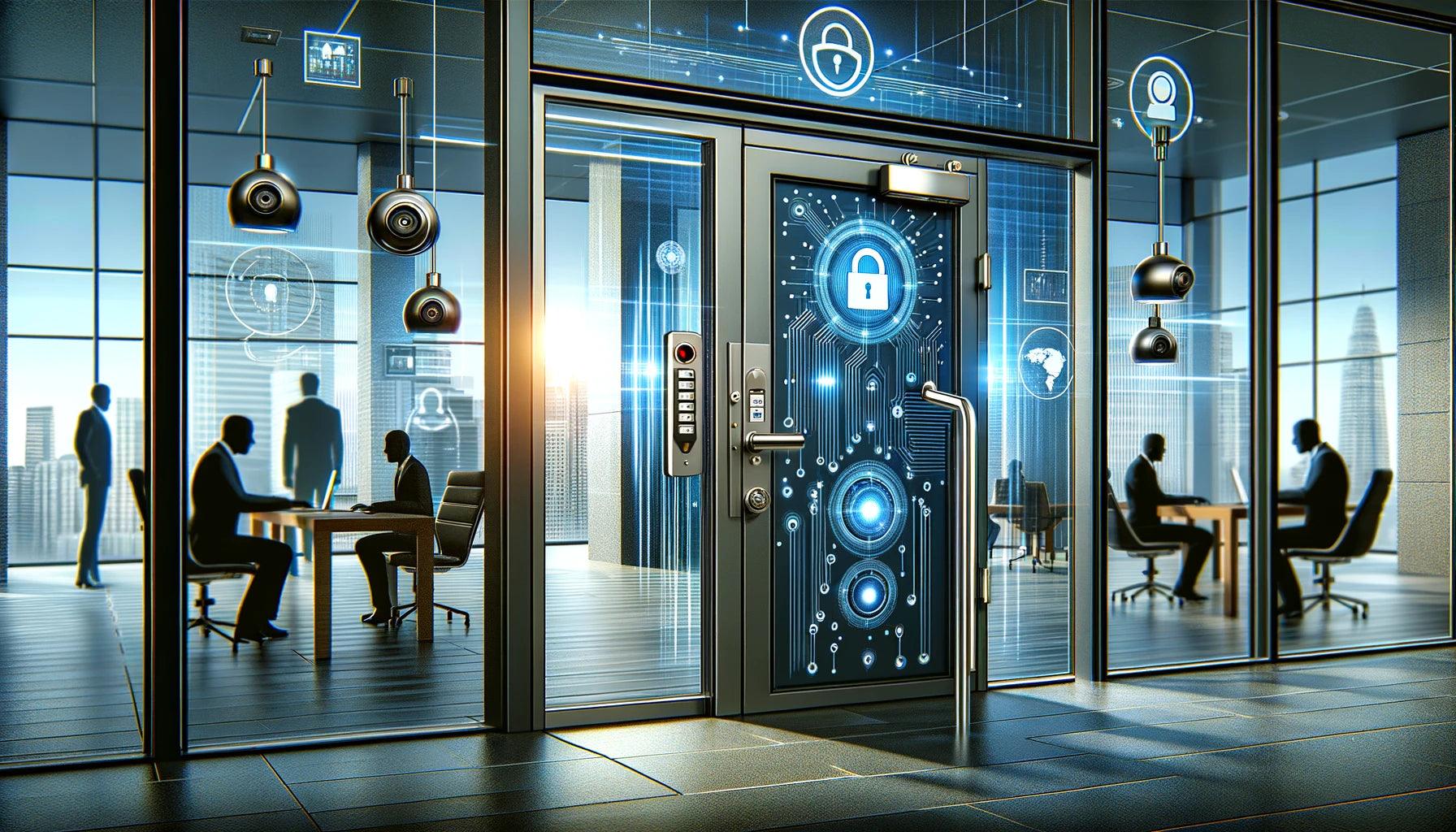As the business world evolves and technology advances, so have and will Enterprise Resource Planning (ERP) systems. ERP solutions are adapting to take advantage of innovative technologies and to meet business needs and customer demands.
With all of the disruptions from the pandemic, more businesses are looking to invest in ERP solutions to utilize modern functionalities to be more proactive, productive, and efficient. Modern ERP systems can help transform businesses with increased automation, better business insight, and streamlining operations. Below are the key trends for ERP systems over the next year and beyond.

More Movement to the Cloud
Cloud ERP continues to gain momentum as fears of security issues have diminished, and as more businesses look for mobile capabilities, leaner IT infrastructure and overhead, and lower costs. An increasing number of small businesses are adopting cloud-based ERP as it requires minimal startup costs and involves apredictable monthly payment that includes all upgrades and maintenance. It is also popular with smaller businesses as it doesn’t require in-house IT resources andis more scalable as they canstart with the modules needed and add functionality, users, and cloud resources more cost-efficiently as they grow.
Cloud ERP provides businesses with the ability to digitally transform by supporting modern technologies such as AI, machine learning, Big Data, and IoT. It is expected that the cloud ERP market will grow at a CAGR of 17.4% from 2020 to 2025 reaching $101.1 billion.
Artificial Intelligence and Other Technologies that Drive More Efficiency and Productivity
Businesses are looking to take advantage of the functionality artificial intelligence (AI) has to offer and the data it provides. To utilize new technologies, ERP systems are adapting to allow for intelligent tech integration. These intelligent ERP (iERP) systems will integrate with Industry 4.0 technologies to more effectively maintain supply chains, prevent machine downtime, understand customers’ needs, locate inventory, and produce products.
Integrating with technologies such as robotic process automation (RPA) and even more seemingly simple solutions, such as electronic signature software,makes it easier and quicker for employees to do their jobs to include even the smallest of tasks. Today’s employees expect companies to utilize modern technologies so implementing them helps to attract and retain employees as well as increase the speed and accuracy of transactions, all of which benefit an organization.
iERP systems have machine learning and virtual agents built into them andgather information on customer demand, supply chain issues, and logistics which can be used to help improve customer satisfaction. ERP with AI functionality shows where there are inefficiencies in processes and wasted resources so they can be resolved. iERP can use algorithms to monitor a production line from start to finishto optimize workflow. It can also automate financial processes to make them faster and more accurate while identifying different types of invoices to categorize them accordingly. The added data from these technologies provide greater insight into customer behaviors and more accurate forecasting.
AI in ERP can also help Human Resources by analyzing information about applicants to identify good candidates and about current employees to identify situations such astraining that need to be completed or if a review is coming due. iERP virtual assistant capabilities help with sales and service and these assistants self-learn to perform better and handle more situations. This technology allows human staff to have greater time to address more significant tasks and provides data to better understand customer needs.
Mobile is Becoming a Necessity
As the need for people to conduct business everywhere increases, so does the importance of mobile capabilities in ERP systems. Mobile ERP enables workers on the plant floor or in the warehouse to perform tasks away from their workstations. Sales and service reps can conduct work in the field and capture data right away to avoid redundancies and errors.
With mobile ERP, managers have real-time visibility to information on the go so they can handle situations immediately before they escalate. Communication and collaboration are improved since staff on the move still have access to company information and can discuss it with other employees and be working off of the same data. Mobile ERP increases productivity since everyone can work on their laptops, smartphones, or tablets anytime and anywhere as long as there is an internet connection.
More Personalized ERP Solutions
Businesses are looking for solutions that are more suited to how they operate rather than trying to use a one size fits all system that doesn’t meet their needs. Industry-specific solutions provide the functionality for the unique requirements of certain industries. Industry-specific ERP is created with an understanding of how that industry vertical operates with features that help with industry-specific operations as well as general business processes.
Having an industry-specific solution avoids customization that can be costly and problematic down the line when updates are needed or if another application is added due to systemfunctionality being altered.For that same reason, internal IT staff are usually needed to assist with updates to customized ERP systems so they continue tofunction properly afterward.
ERP is also on track to become more user-friendly and intuitive, with simpler interfaces for users to more easilylearn the software. Customer needs are also being addressed with dashboards that they can design to meet their needs and virtual assistants that can work with both text and voice to help with questions about orders. The expectations of modern ERP are for it to be flexible, easy-to-use, fast, and have AI functionality built-in.
Additive Manufacturing / 3D Printing
Many manufacturers are making use of additive manufacturing or 3D printers to help them create prototypes or even production parts. 3D printershelp manufacturerscreate customized products and overcome gaps in the supply chain. ERP that can utilize additive manufacturing helps determine when a 3D printer will be needed so planning for its use can be scheduled.Since ERP helps to forecast demand and bottlenecks, it also helpswith planning for the amount of 3D printers that will be needed for production.
ERP systems track all of the information around additive manufacturing including raw material procurement and pricing, management of inventory for both printers and materials, and licensing deals needed for designs and relationships with suppliers. ERP also keeps track of when service is needed for the 3D printer, and it helps businesses to understand the costs of all resources associated with additive manufacturing to strategize how to best use this technology.
IoTConnectivity
The Internet of Things (IoT) allows for ERP to connect to sensors or physical devices. With ERP and IoT, businesses can get lots of data to manage machine performance and monitor production processes in real-time.
IoT devices are helping companies to optimize their production. ERP that supports IoT can produce equipment maintenance schedules and showunused assets and underutilized machines across the company. ERP using IoT can help businesses achieve better operational excellence, efficient workflow, and more accurate decision-making.
Two-Tier Model for Multiple Locations
Companies that have multiple locations may adopt a two-tier approach which means they have a legacy or Tier 1 system at their main location that may be highly customized, and run a Tier 2 or Cloud ERP at their subsidiaries. If subsidiaries are in other countries, the Tier 2 system can accommodate their language and currency requirements and still be connected and work with the Tier 1 system. The two systems would be integrated so data flows from Tier 2 systems to the Tier 1 to enable the corporate office to have visibility to what is happening at the other locations.
This approach is more economical for companies as the main location may need a more complex and expensive system than the subsidiaries do. Implementing cloud ERP at remote locations is quicker and lower in cost with an easier user interface to learn. Usually, the main location will handle such things as finance, human resources, and procurement, and the Tier 2 systems will manage sales, marketing, and manufacturing processes.
Support for Digital Marketing
Marketing isn’t discussed much when it comes to ERP systems, but it’s an essential part of a business that needs to be supported by ERP. ERP systems are incorporating more marketing capabilities to include working with social media platforms to be able to post, utilize links, and gather analytics.
Even if businesses don’t use an ERP system for their marketing – perhaps the system doesn’t have strong enough marketing capabilities or they already have a marketing solution in place – they still need to utilize data from ERP to help strategize. ERP systems provide key information such as peak sales periods, customer pain points, what items sell the best, what items are reaching shelf-life expiration, what items could be paired together, etc. This business intelligence provides important insights to better determine where to focus marketing efforts.
What’s Ahead?
Technology will continue to advance and ERP vendors will incorporate these innovations as there becomes a need for them. More companies will move to the cloud as the need for greater flexibility and modern features grows. Small businesses will take advantage of cloud ERP to optimize their operations and gain insight for future growth.
All of the supply chain disruptions from the pandemic will push ERP system vendors to expand capabilities in this area. Challenges with the world economic situation are likely to continue and it will be important to have strong forecasting and analytical functionality to help with supply chain management.
It will be interesting to see whatfuture technology innovations evolve that develop into new ERP trends.




